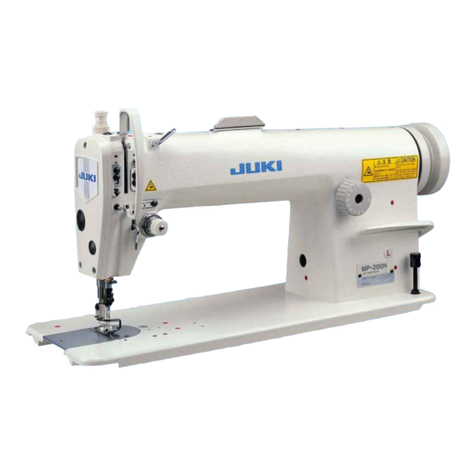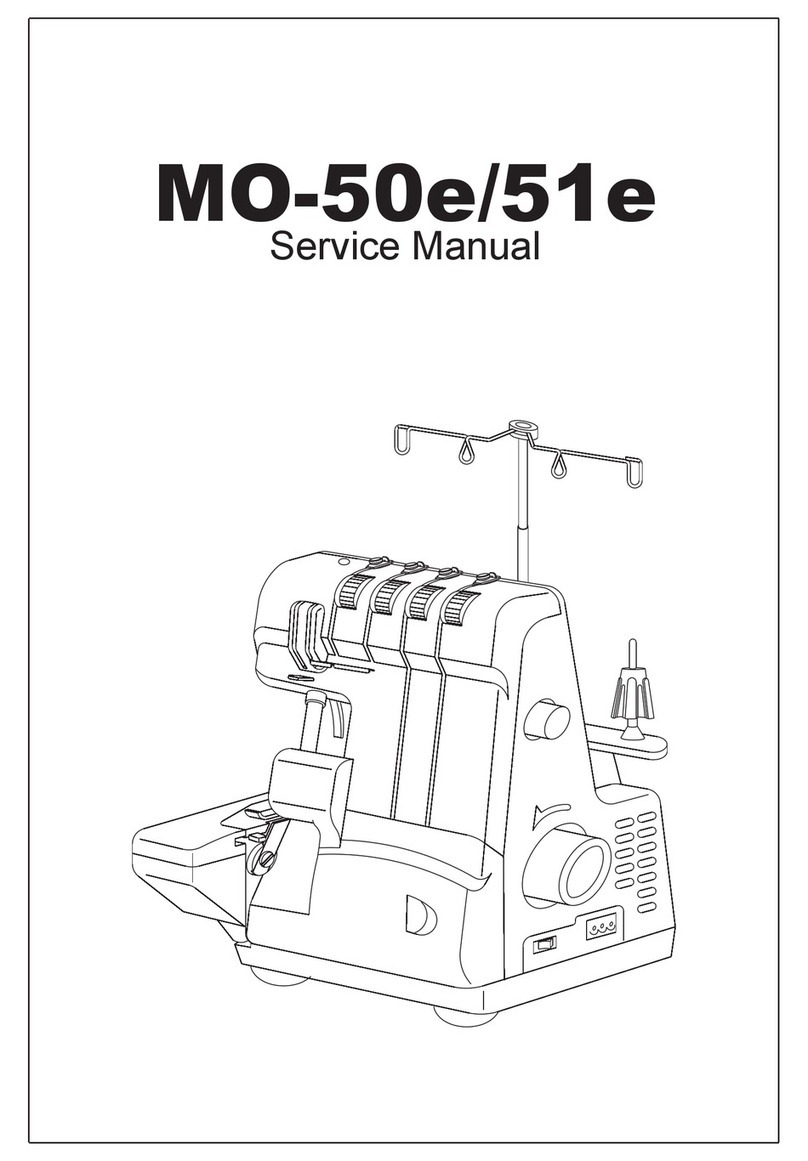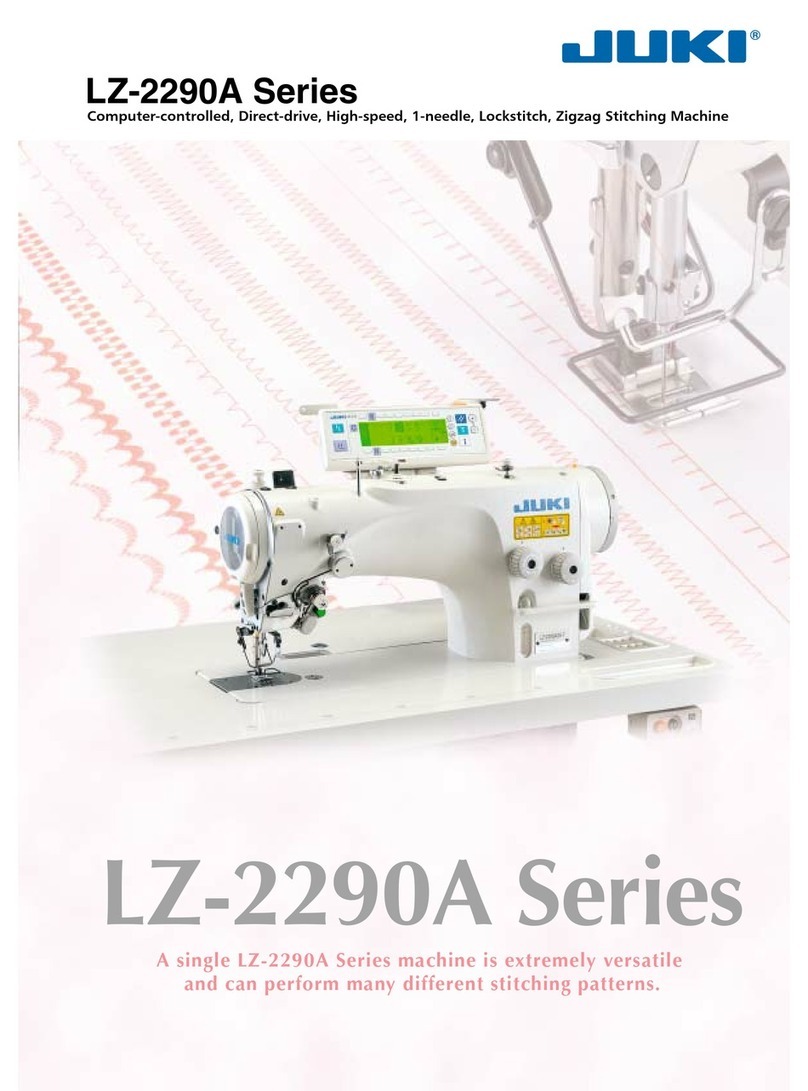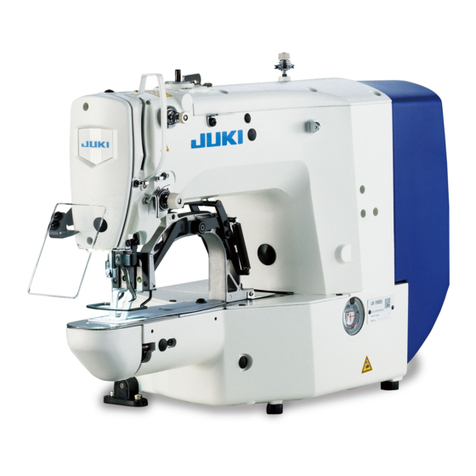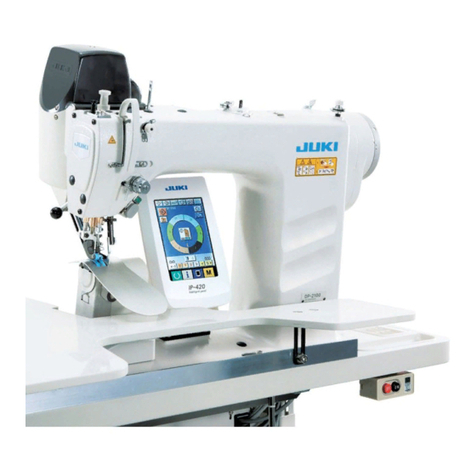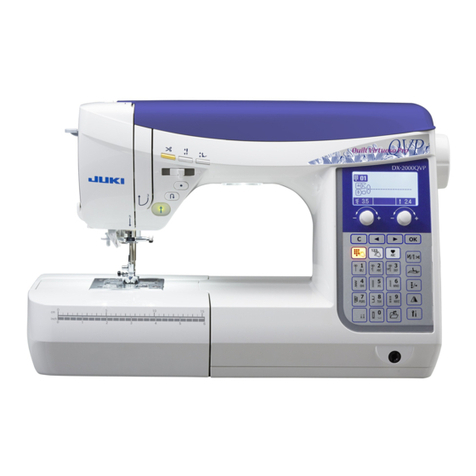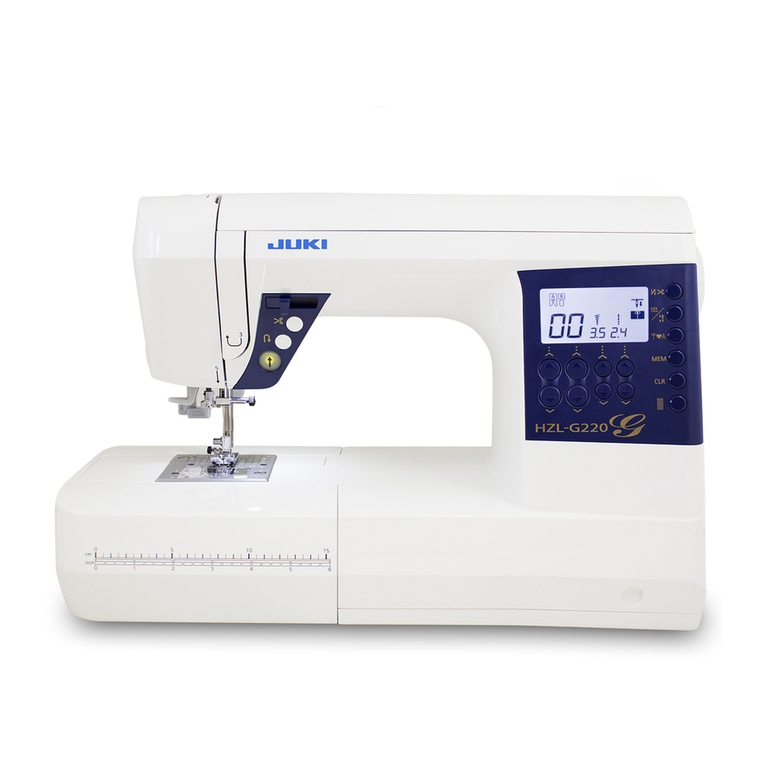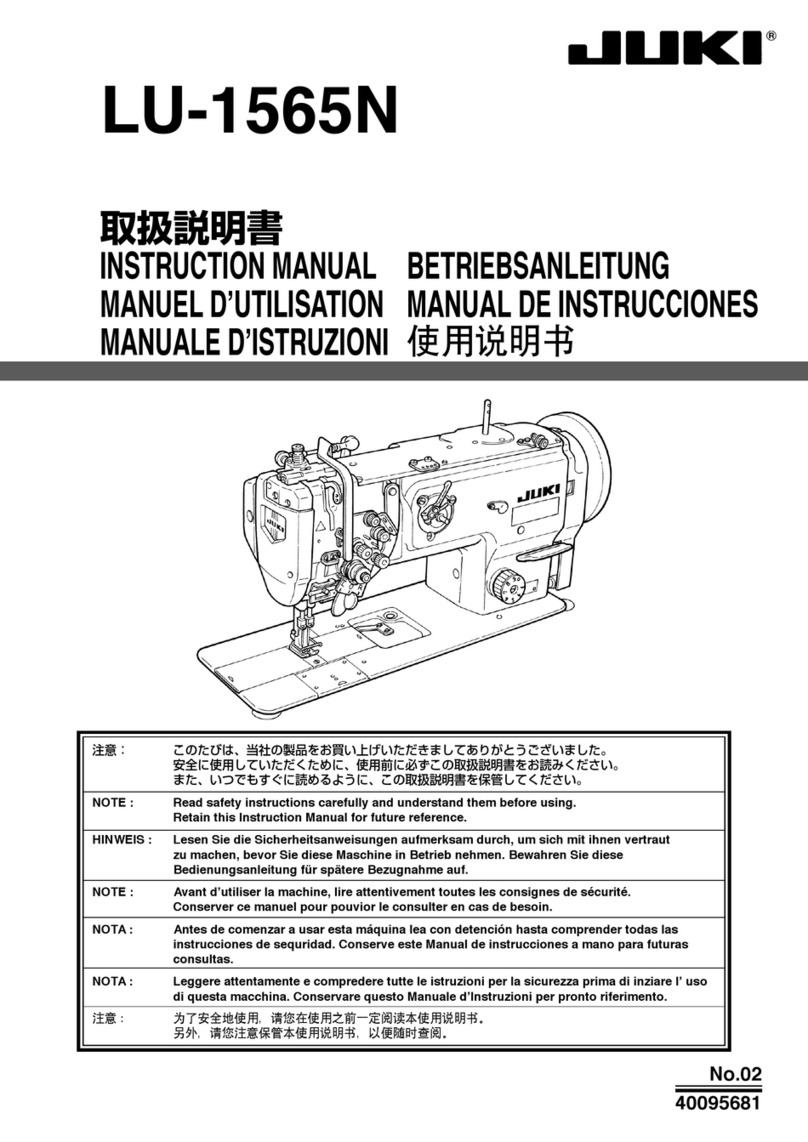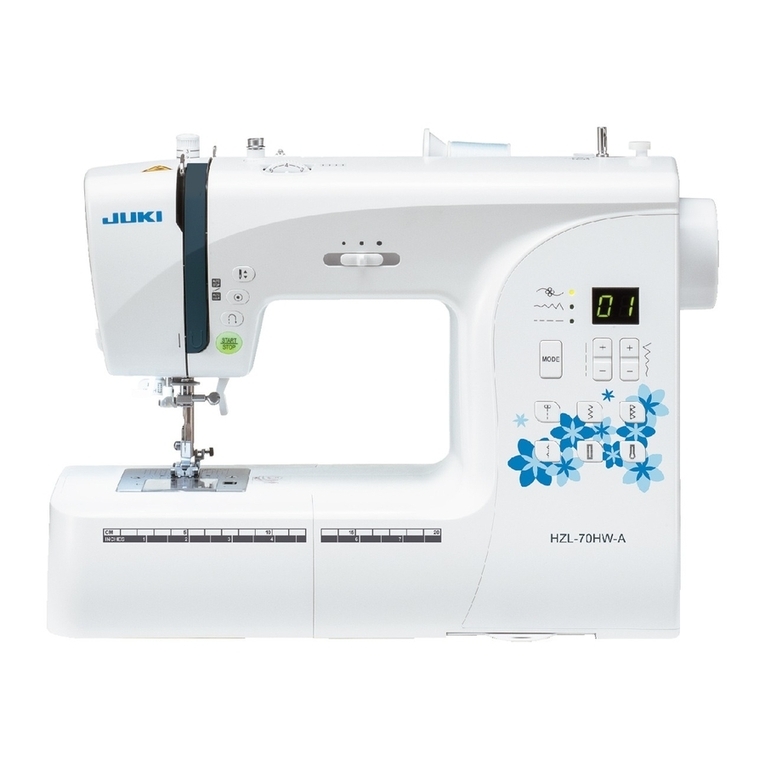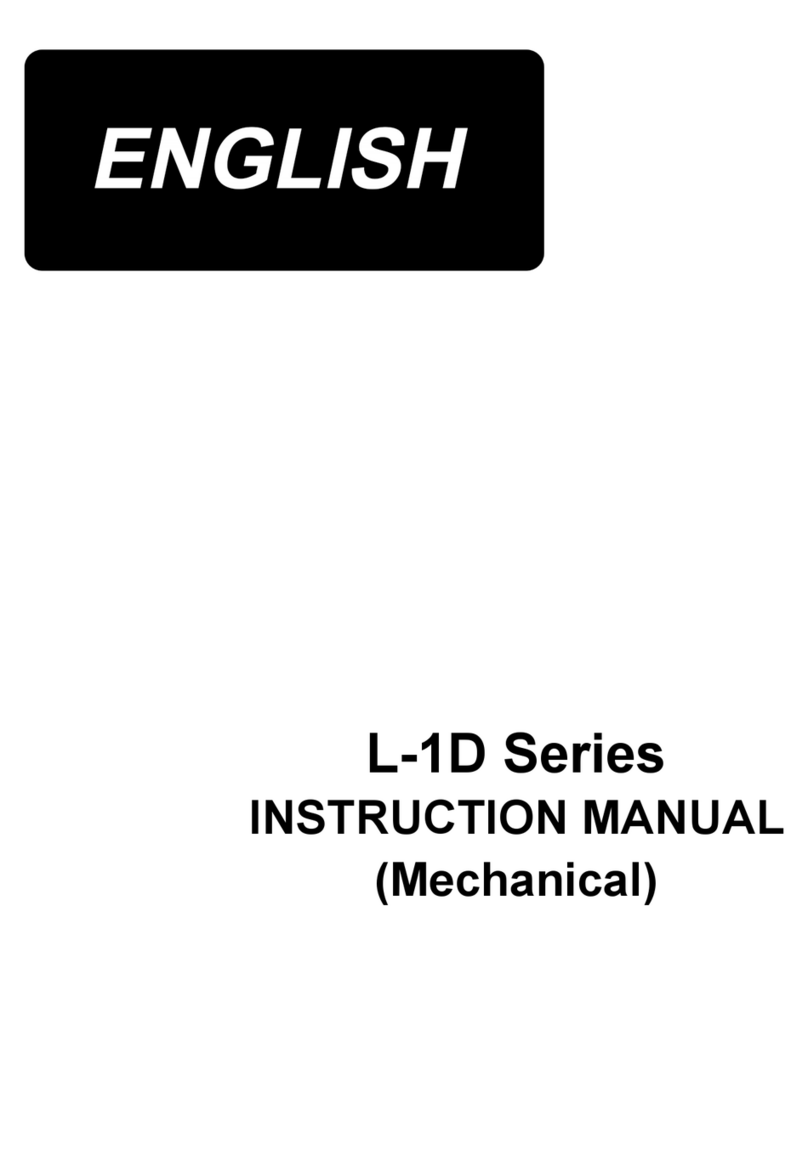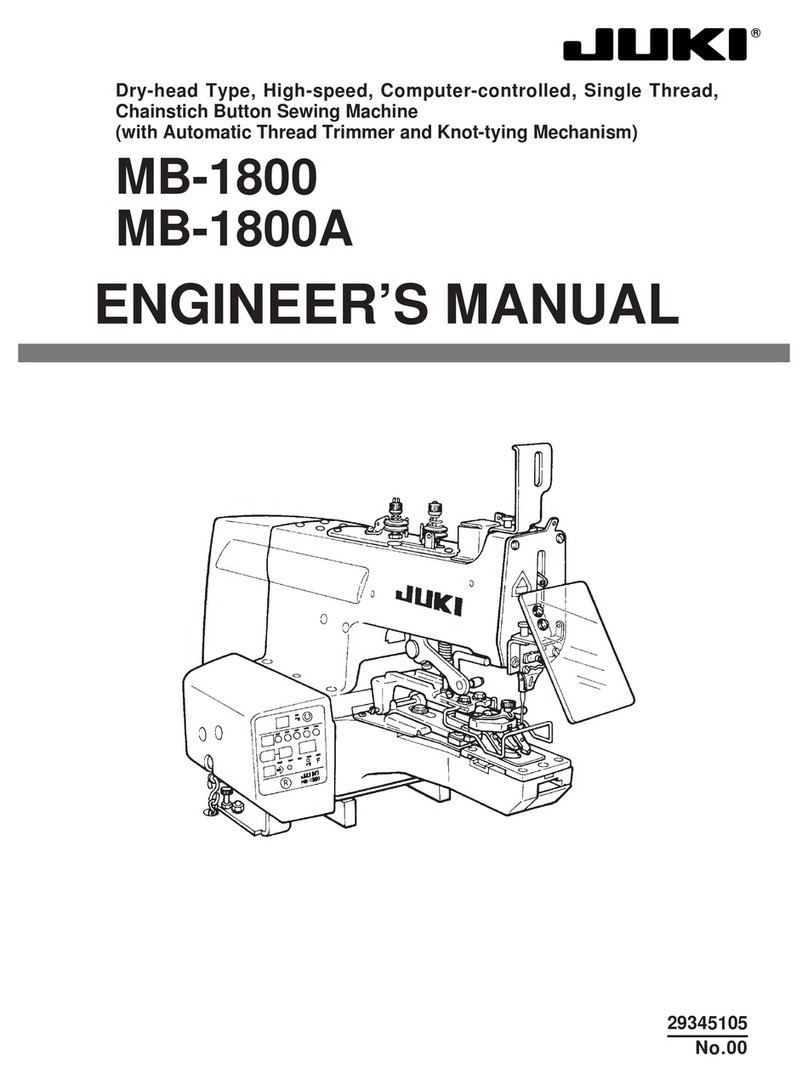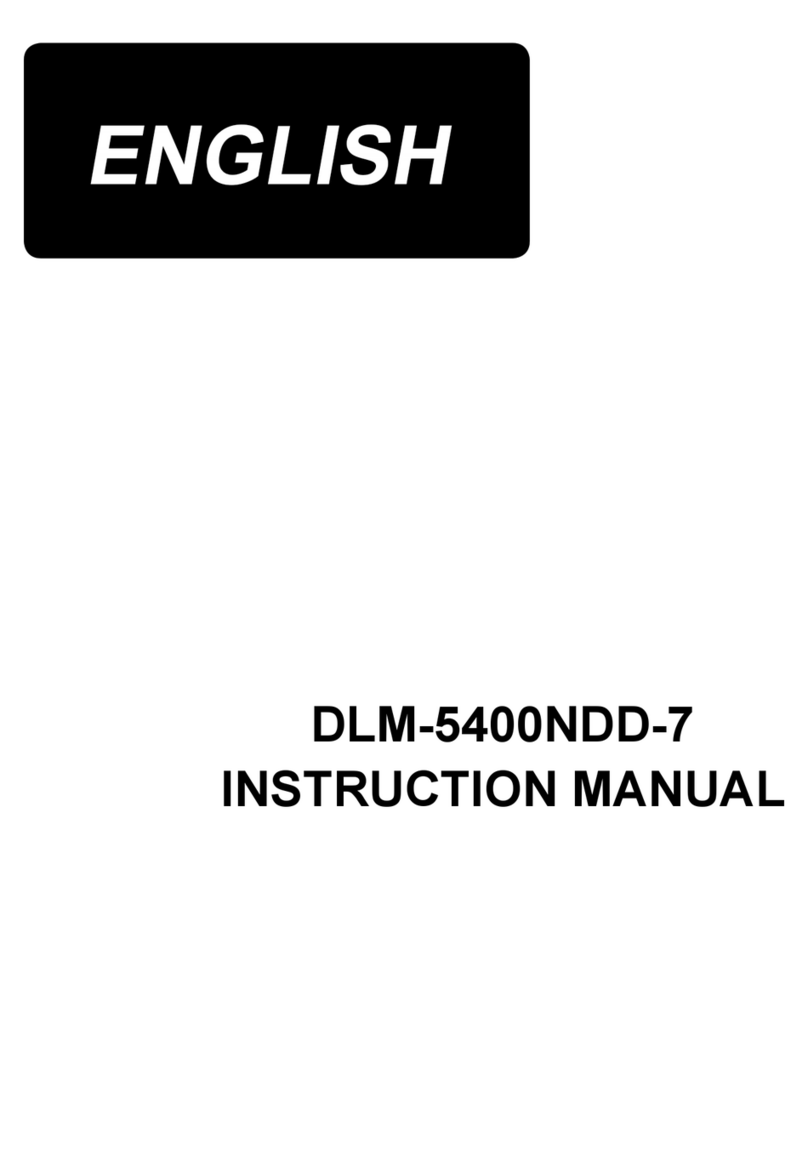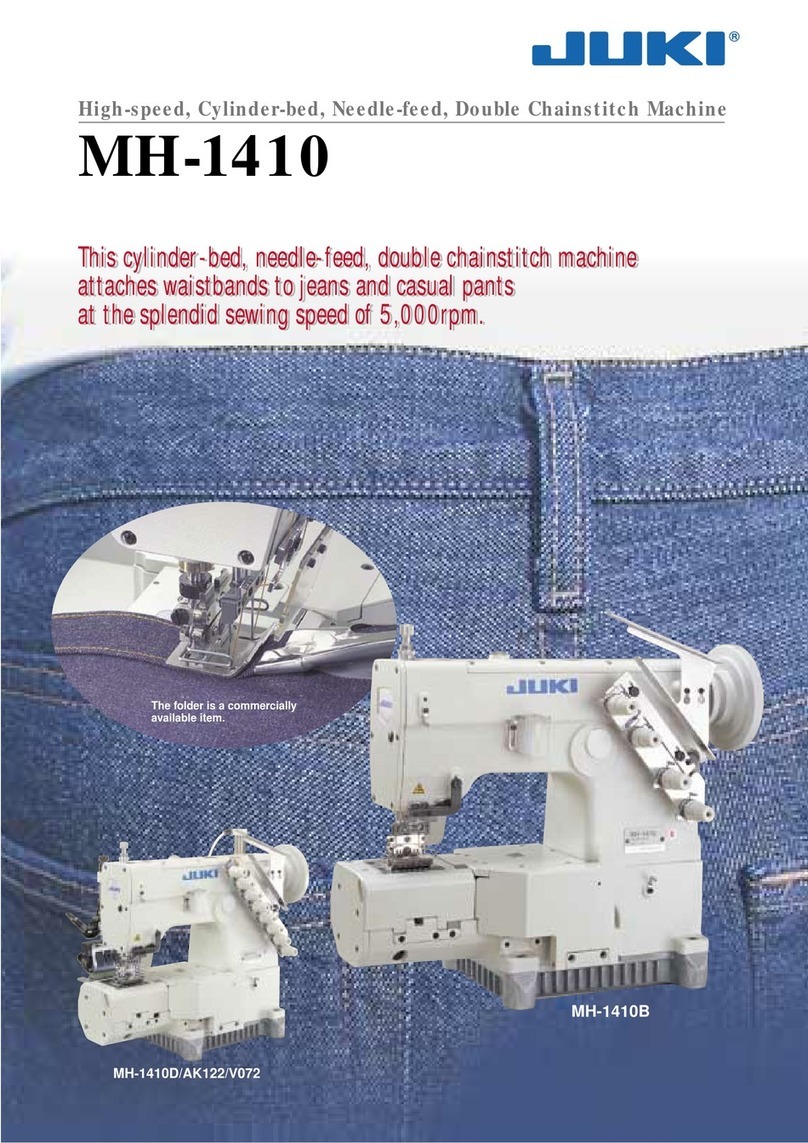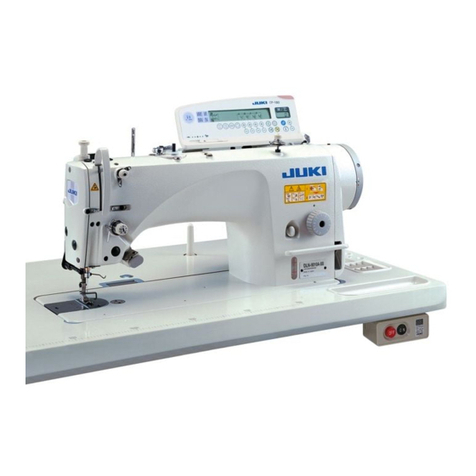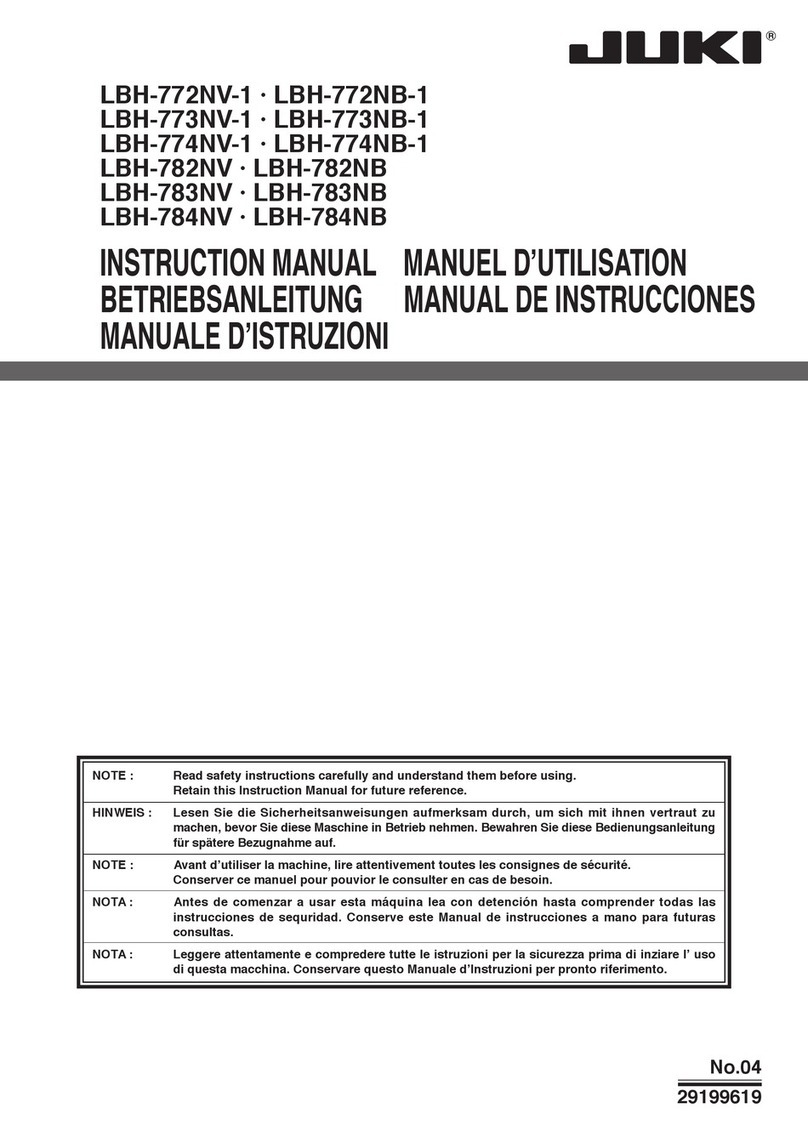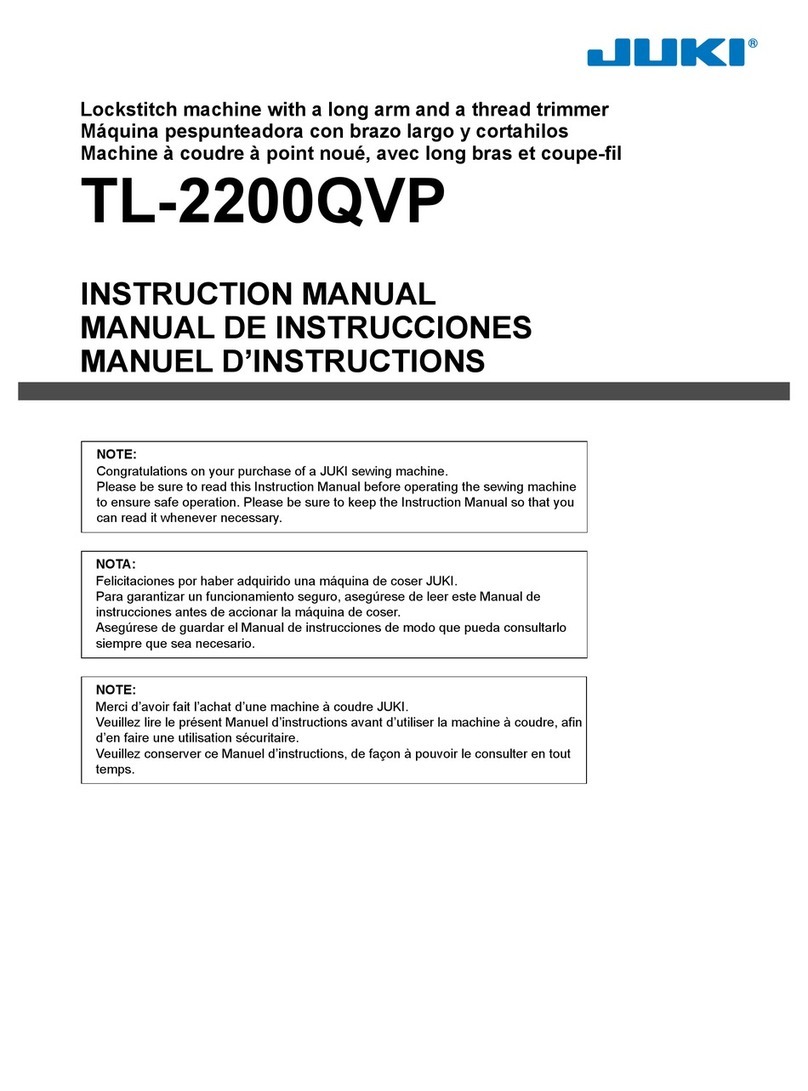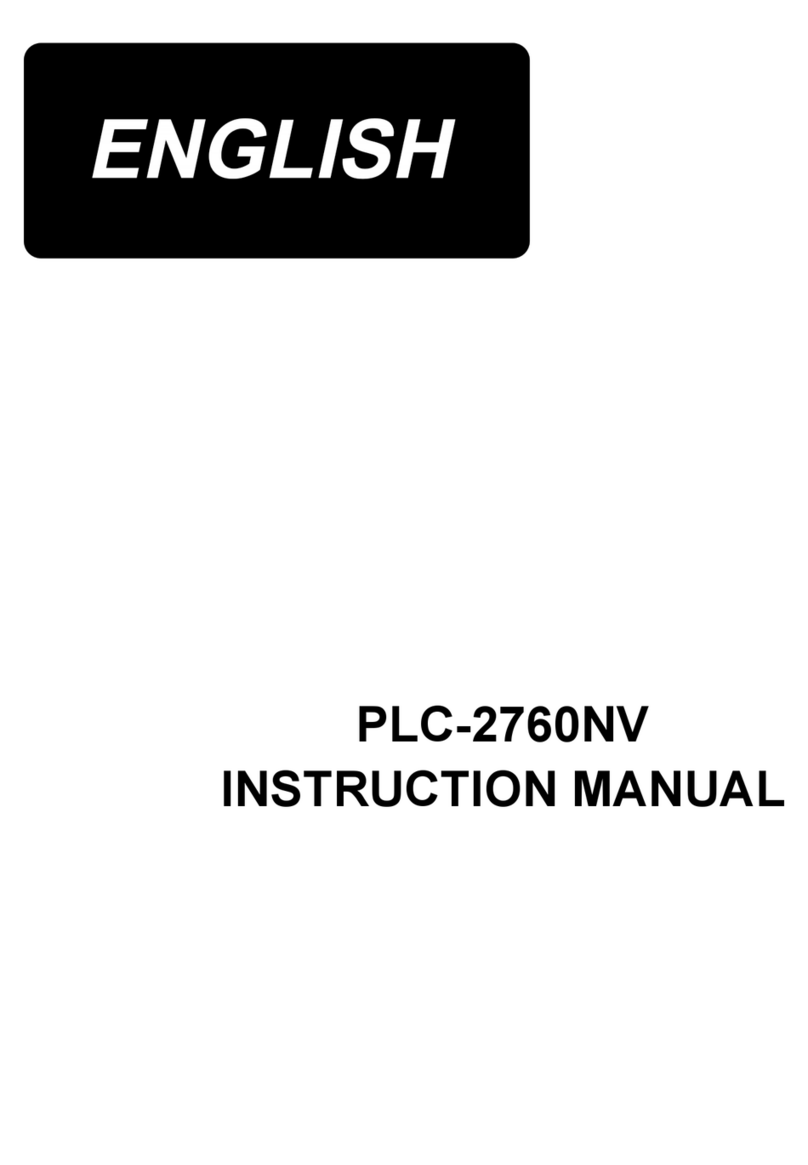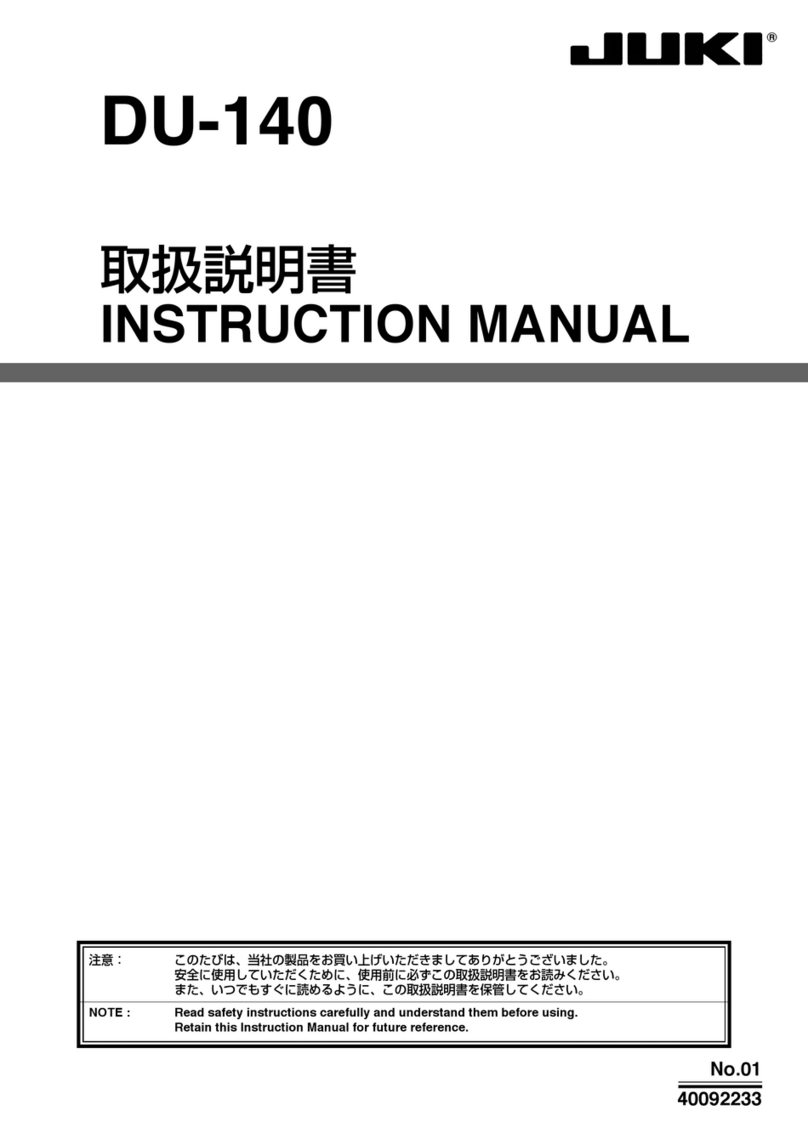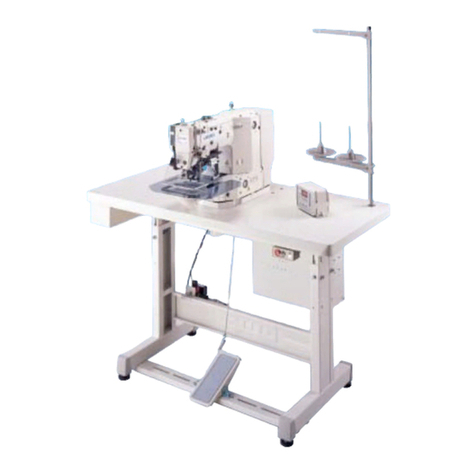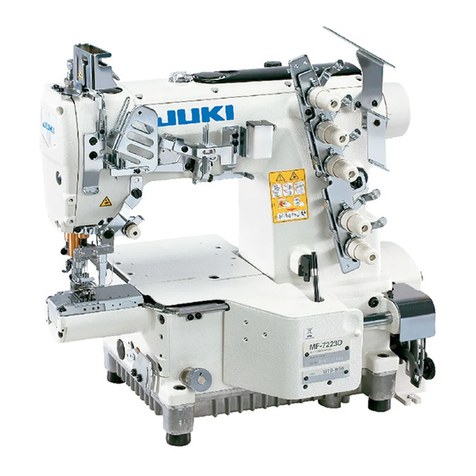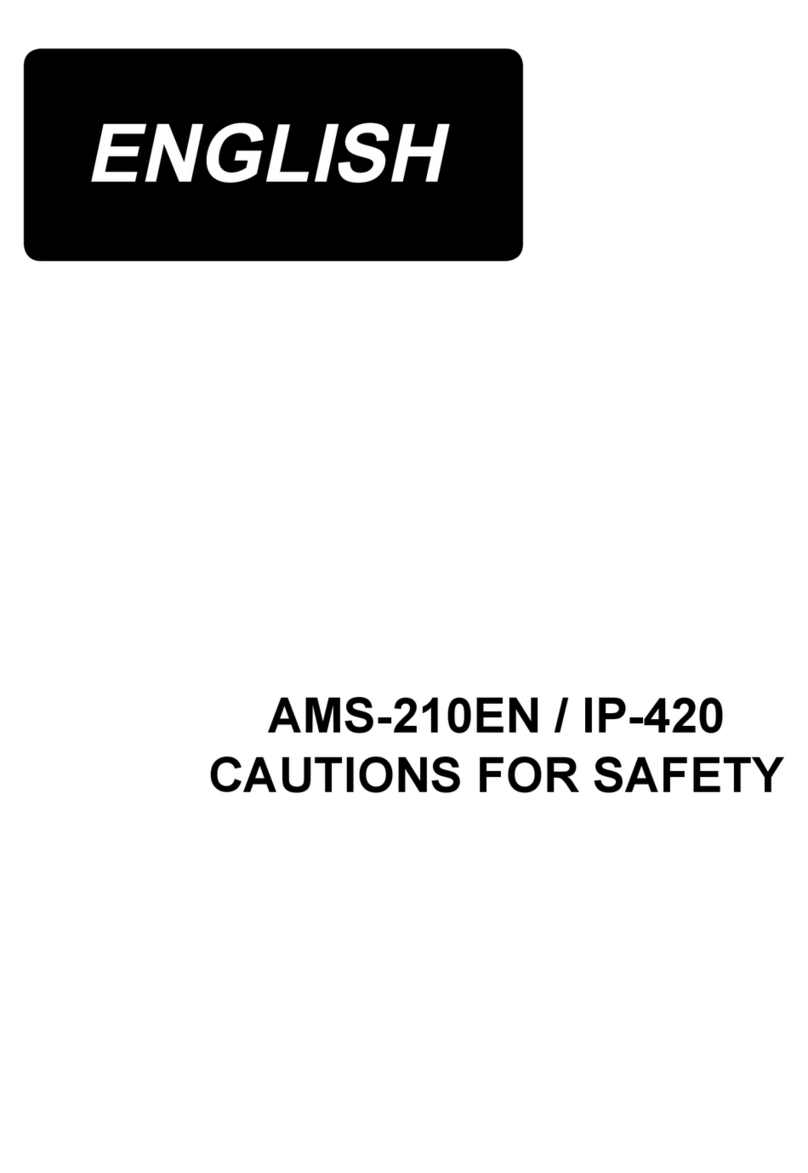
CONTENTS
1. SPECIFICATIONS............................................................................................................ 1
1-1. Specications of the sewing machine head ..................................................................... 1
1-2. Specications of the control box....................................................................................... 1
2. SET UP............................................................................................................................. 2
2-1. Drawing of table................................................................................................................... 2
2-2. Cautions when setting up the sewing machine................................................................ 3
2-2-1. How to carry the sewing machine ............................................................................................3
2-2-2. Caution when placing the sewing machine............................................................................. 3
2-3. Installation............................................................................................................................ 3
2-4. Installing the pedal sensor ................................................................................................. 4
2-5. Connecting the connector .................................................................................................. 5
2-6. Installing the reactor box [Only for the EU type models] ................................................ 6
2-7. Installing the power switch................................................................................................. 9
2-7-1. 3-phase 200 to 240V, Single phase 100 to 120V...................................................................... 9
2-8. Installing the thread stand................................................................................................ 11
2-9. Attaching the connecting rod........................................................................................... 11
2-10. Adjustment of the pedal.................................................................................................... 12
2-10-1. Installing the connecting rod................................................................................................ 12
2-10-2. Adjusting the pedal angle ..................................................................................................... 12
2-11. Pedal operation.................................................................................................................. 12
2-12. Power switch...................................................................................................................... 13
2-13. Lubrication ......................................................................................................................... 15
3. PREPARATION BEFORE SEWING .............................................................................. 16
3-1. Attaching the needle ......................................................................................................... 16
3-2. Removing/tting the bobbin case.................................................................................... 16
3-3. Winding the bobbin thread ............................................................................................... 17
3-4. Threading the machine head............................................................................................ 18
3-5. Thread tension................................................................................................................... 18
3-5-1. Adjusting the needle thread tension......................................................................................18
3-5-2. Adjusting the bobbin thread tension ..................................................................................... 18
3-6. Presser foot pressure ....................................................................................................... 19
3-7. Adjusting the stitch length ............................................................................................... 19
3-8. Changing the sewing speed ............................................................................................. 20
3-9. LED hand light ................................................................................................................... 21
3-10. Reverse feed stitching ...................................................................................................... 21
3-11. Adjusting the amount of oil (oil splashes) in the hook .................................................. 22
3-11-1. Adjusting the amount of oil in the hook...............................................................................22
3-11-2. How to conrm the amount of oil (oil splashes)................................................................. 23
3-11-3. Sample showing the appropriate amount of oil.................................................................. 23
3-12. Adjusting the thread take-up spring and the thread take-up stroke............................. 24
4. FOR THE OPERATOR................................................................................................... 25
4-1. How to set the machine head and to initialize data (the factory-set state at the time
of shipment)....................................................................................................................... 25
i
